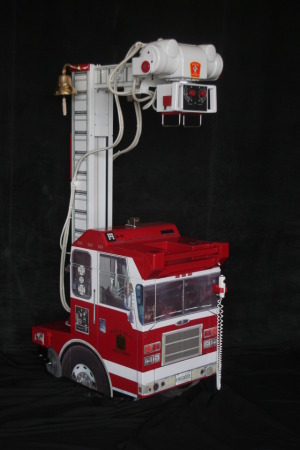The Littlest Patients: It's Important to Design Medical Equipment With Children in Mind
by
Keith Loria, Reporter | February 04, 2010

Freddie the Fire Engine
This report originally appeared in the January 2010 issue of DOTmed Business News
In health care, size matters. Just as you wouldn't give a child the same dose of medicine that you would an adult, the medical equipment used on children should be created keeping the size of the target patient in mind. To this end, many companies have beefed up their efforts in developing child-specific equipment.
"Medical equipment comes in variable sizes and obviously matching it to the size of the patient is essential, or we would be left with a lot of kids who would suffer," says Alan Nager, Director of Emergency and Transport Medicine at Childrens Hospital Los Angeles. "It could be anything from IVs to blood pressure equipment to something as simple as an oxygen mask."
While many of these advancements in pediatric equipment are technical, others simply deal with the look of the equipment, which can ease the mind of a frightened child. That's why equipment shaped as toys or animals often makes it easier for a medical professional to deal with younger patients.
"Some of those instruments coming at them can be intimidating and scary, but if it's coming at them covered in a furry animal, or something that would make the child laugh, it keeps them calm," says Evy Schwartz, online marketing director for Aria Medical, which sells a wide variety of medical equipment from different manufacturers and does a great deal of business in the pediatric market. "You want it to be a pleasant experience so some of the supplies we offer, we help doctors make it less scary for the younger kids and more fun."
CT for the Child
Over the past decade, the use of CT to image pediatric patients has increased substantially, with more than 7 million pediatric CT procedures expected to be performed in 2009. What a lot of people don't realize is that more than half of all children who undergo medical procedures are under the age of 5. These procedures are usually needed to diagnose and treat health problems or potential health problems caused by congenital birth defects. As they grow, sick children may require 15 to 20 different imaging procedures because of this.
"If you think about your average two-year-old, how do you tell them to hold their breath or sit still? This requires some very unique demands for pediatric imaging," says Robb Young, Senior Manager CT Business Unit for Toshiba Medical Systems. "You can't just take equipment designed for adults and apply it to children because the needs are definitely different. Because of smaller vessels, lower bone density and less body fat, pediatric patients have different imaging needs than adults."
